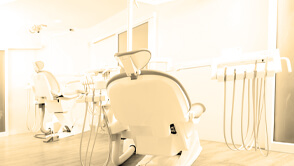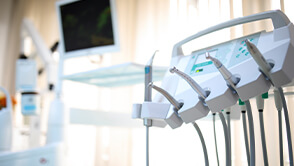
Is Your Dental Practice Ready For the OSHA Hazard Communication Standard Deadline of June 1, 2016?
- Published
- Feb 14, 2020
- Share
As a dentist, you cannot plan for every type of situation that may have a negative impact on your practice. Events like a floundering economy or patients who are quite vocal about expressing their dissatisfaction can quickly squelch your thriving office. However, there are some situations that are in your control, and planning for them can alleviate the stress and potential financial impact they may have on your business. One type situation looming large on the horizon is the Occupational Safety and Health Administration (OSHA) deadline of June 1, 2016. If you have already worked to meet OSHA requirements over the past few years, meeting updated OSHA guidelines by upcoming deadline should not be a difficult task.
History of OSHA
Since its inception in 1971, OSHA has been instrumental in keeping workplaces in America safe. On-the-job injuries and deaths have greatly decreased due to OSHA guidelines and their enforcement. Dentistry, as a health care practice, must meet specific guidelines geared towards the reduction of risk due to blood-borne pathogens, drugs and other chemicals, as well as noise, ergonomics, vibrations, workplace violence and human hazards.
Key Mandate Dates
OSHA has made changes to the Hazard Communication Standard in order to align with the international classification and labeling system. The changes are in four areas:
- Hazard classification
- Labels
- Safety data sheets
- Information and training
Dental practices are most concerned with labels, SDS, information and training. New labels will have specific requirements, such as a pictogram, hazard statement, precautionary statement and harmonized signal word. SDS will have a new, 16-section format. The label and SDS changes should be familiar to you. As of December 1, 2013, all staff are required to be educated and trained in the new standards. If you've already done this, you are well on your way to meeting OSHA standards.
As of June 1, 2016, you will no longer see any elements of the old hazardous communication system. By this date, you must have updated the labeling in your workplace and hazard communications programs. Employee training is mandatory for any newly identified hazards. State organizations such as the California Dental Association have a sample Hazard Communication Plan for member dentists to follow.
Minimum Requirements for Compliance
In a dental office, the minimum requirements for OSHA compliance include posting a hazardous exposure protocol and educating all staff on the best ways to follow it. You must supply personal protection equipment for all staff members and ensure that the equipment meets the guidelines. All chemicals must be labeled correctly according to the latest guidelines, and an eyewash station must be available and working properly. You must have a record of all employees' hepatitis B vaccinations. A hazard communication plan must be kept in a safe place, and the employees must be aware of where this information can be found, along with engineering controls and the safety data sheets.
A Visit from OSHA
A visit from an OSHA representative should not leave you or your staff trembling if you have prepared according to the guidelines. Typically, the visit entails an opening conference where you or your office manager meets with the inspector. At this time, the OSHA representative explains to you the purpose for the inspection and informs you which documents must be available for perusal. These typically include your hazard assessment, OSHA safety information and the training record of your staff, but other documents may also be requested. You or a staff member will guide the inspector through your offices. He or she will check to ensure that all standards are met, such as a properly working eyewash station.
The representative may also have confidential meetings with one or more staff members and will likely pose questions about any concerns regarding safety standards. Expect a closing conference when the inspector will meet with you or your office manager to discuss any violations and also give you an opportunity to correct any violations while the OSHA representative is still there. This helps decrease the cost of any applicable fines.
The latest OSHA compliance standards are not meant to be a burden or punishment for dentists or their staff. They are simply a proven method of keeping your skilled and trusted employees safe while at work. Do not delay in making these changes; after all, the safety and well-being of you and your staff should be one of your top priorities.
If you want information as to how to keep your dental practice financially sound, please contact our CPAs experienced in working with dentists and their businesses.
Contact EisnerAmper
If you have any questions, we'd like to hear from you.
Receive the latest business insights, analysis, and perspectives from EisnerAmper professionals.






